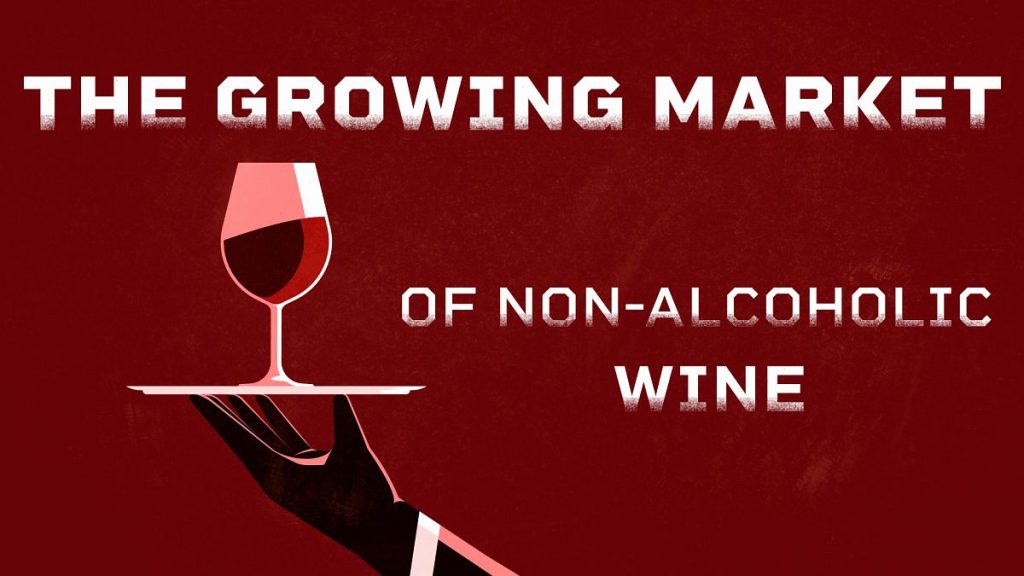Embracing Change: The Rise of Low and Non-Alcoholic Wines in Europe
A Cultural Shift in Wine Consumption
Wine has long been an integral part of Europe’s cultural identity, with its rich history and deep-rooted traditions shaping the continent’s culinary and social landscapes. However, in recent years, a noticeable shift has emerged in consumption patterns. Younger generations are increasingly embracing a healthier lifestyle, and drinking less alcohol has become a trendy and socially acceptable choice. This cultural shift has led to a decline in wine consumption across Europe, prompting experts to urge the wine industry to adapt to these changing times. By exploring the growing market for low and non-alcoholic wines, European producers may find a viable solution to counter the economic challenges posed by this decline.
The Decline of Traditional Wine Consumption
The European Union (EU) has historically been the world’s largest consumer of wine, accounting for approximately half of global wine consumption. However, this dominance is waning. Between 2010 and 2020, EU wine consumption dropped by nearly 25%, and this downward trend is expected to continue, albeit at a slower pace. In 2023 alone, EU citizens consumed 107 million hectoliters of wine, reflecting a steady decline over the years. Health concerns, evolving drinking habits, and changing consumer preferences are cited as the primary reasons for this shift. As a result, the traditional wine industry is facing significant economic pressures, both domestically and internationally, with exports also suffering due to challenging global trade conditions.
Exploring New Opportunities in Low and Non-Alcoholic Wines
To address these challenges, the EU Commission established a reflection group in 2023 to analyze the state of the wine industry. This group highlighted the need for European producers to adapt to a changing climate, shifting consumer tastes, and the rise of non-alcoholic beverages. Gerardo Fortuna, a journalist covering the industry, notes that the reflection group has recommended exploring the low and non-alcoholic wine segment, which is gaining popularity worldwide. The global market for non-alcoholic wine is projected to grow from €8 billion in 2023 to €14 billion by 2031, with an annual growth rate exceeding 10%. This presents a significant economic opportunity for European producers to diversify their offerings and tap into a booming market.
A Sea Change in Producer Attitudes
Just a few years ago, the idea of non-alcoholic wine was met with skepticism by many European producers, whotake immense pride in their centuries-old winemaking traditions. However, attitudes are beginning to shift. Eric Sargiacomo, vice chairman of the European Parliament’s Agriculture Committee, acknowledges that balancing traditional interests with emerging opportunities is a challenge but believes the industry is well-equipped to succeed in this new space. Non-alcoholic wines offer a flavorful and healthier alternative for consumers who want to enjoy the taste of wine without the alcohol, appealing to a broader demographic, including health-conscious individuals and those who choose to abstain from alcohol.
Innovations in Winemaking
The transition to producing low and non-alcoholic wines is not without its challenges. Winemakers must innovate to ensure these alternatives retain the quality and character associated with traditional wines. Advanced techniques, such as precision fermentation and dealcoholization, are being employed to create products that are both appealing and authentic. These innovations are helping to dispel the notion that non-alcoholic wines are inferior, demonstrating that they can be just as sophisticated and enjoyable as their alcoholic counterparts. By investing in research and development, European producers can position themselves as leaders in this growing market.
The Future of the European Wine Industry
While the transition to low and non-alcoholic wines requires a willingness to embrace change, it also presents a powerful business opportunity for European winemakers. By diversifying their product lines, producers can not only stem the decline in traditional wine sales but also capture a share of the rapidly expanding global market for non-alcoholic beverages. This strategic shift could ensure the long-term sustainability of the European wine industry, allowing it to thrive in a world where consumer preferences are evolving. In doing so, Europe’s winemakers can continue to honor their rich cultural heritage while innovating to meet the demands of a new era.












